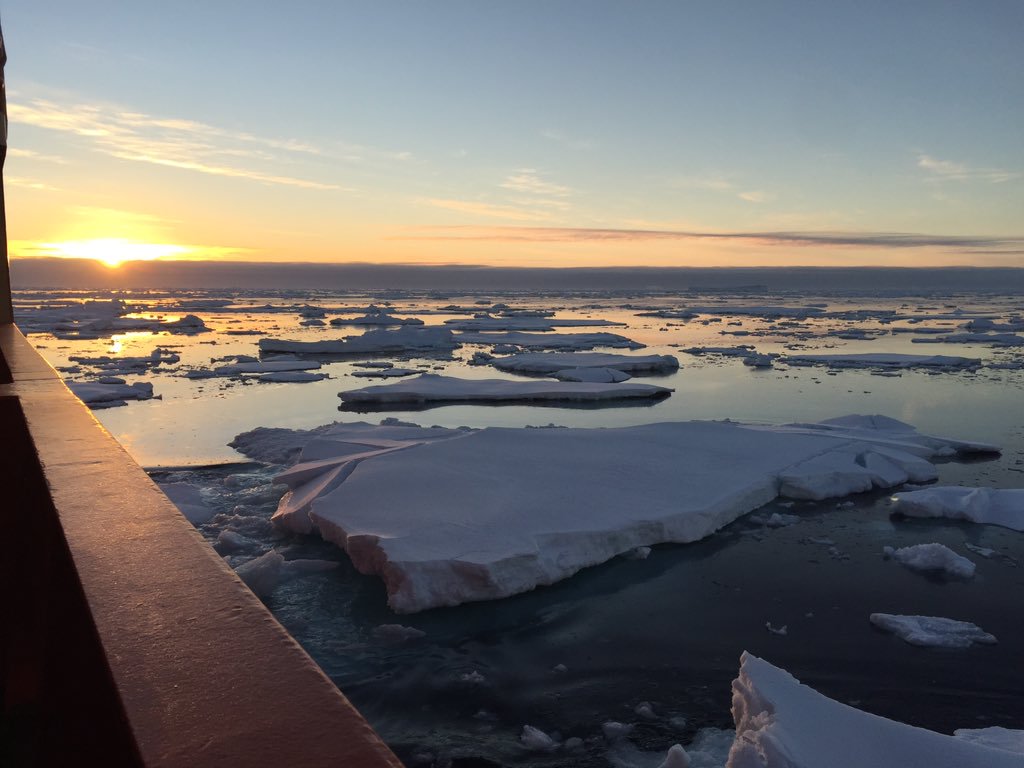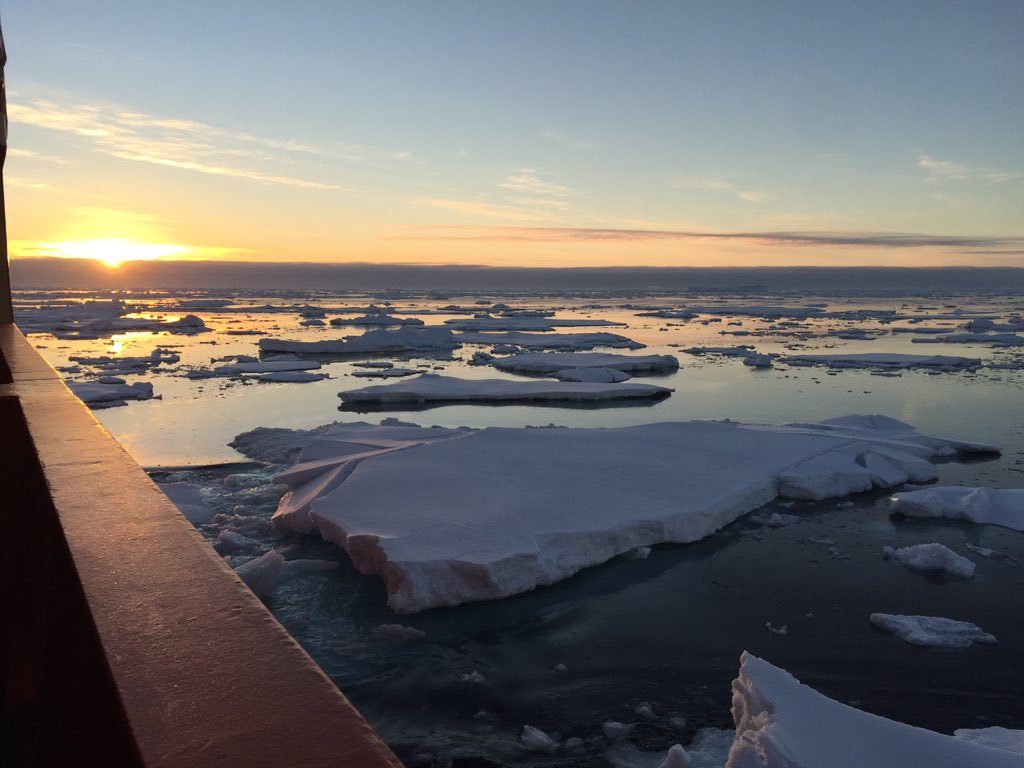
Antarctica’s unique role helps UA research push boundaries of discovery
At the bottom of the world, Antarctica sits as if another planet. The brutal conditions of the frozen continent leave it mostly barren.
Antarctica, though, is a natural laboratory for scientific discovery, and researchers at The University of Alabama are playing critical roles in global efforts to use Antarctica to understand the Earth’s geology, past, climate and biological diversity and to get a better grasp on the cosmos.
“To me, it feels very pure because it’s virtually untouched by humans,” says Dr. Rebecca Totten Minzoni, a marine geologist and paleontologist at UA.
Totten Minzoni is one of several UA scientists and engineers who have done field work in and around Antarctica the past few years. Their inventive work is moving knowledge forward and enhancing the education of UA students.
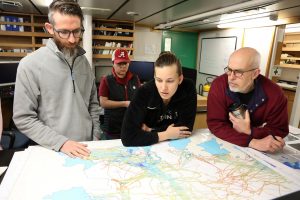
She was part of an expedition just offshore of Antarctica to study what many scientists are hoping to resolve: Antarctica’s contribution to sea level. The research project involving over 100 international scientists is one of the most detailed and extensive examinations of the massive Thwaites Glacier, which accounts for about 4 percent of global sea-level rise today — an amount that has doubled since the mid-1990s.
It’s part of the West Antarctic Ice Sheet, which is experiencing drastic changes each season that signal its response to a changing climate, she said.
She uses her expertise in finding microscopic clues to the past behavior of Thwaites Glacier, searching through mud offshore of the glacier for tiny, singlecelled plankton. Through analyzing what the glacier and ocean left behind, her team can inform models of how the glacier will behave in the future.
In 2019, she and a veteran UA graduate student, Victoria Rios Fitzgerald, travelled aboard a research vessel and ice breaker where they were part of a team that extracted cores of sediment from the sea floor to reveal the conditions around the ice sheet for the past 12,000 years.
“Antarctica has a really important role to play in the climate system, for better or worse, and we need to understand how it’s changing in both long timescales as well as shorter timescales,” Totten Minzoni said.
UA engineering researchers are also helping uncover Antarctica’s past for clues with radar imaging. The UA Remote Sensing Center is part of another large international effort to find the oldest ice on Antarctica, hoping an analysis of the gasses trapped inside can reveal more about the Earth’s climate through the ages to provide perspective and an understanding of how the ice will react in the decades ahead.
In the middle of nowhere – hours away by snowmobile from the nearest, isolated research station – Dr. Drew Taylor, an electrical engineer, dragged a large radar across the ice, penetrating nearly two miles below to discover if an area identified by researchers from Europe held the oldest ice.
The unique radar developed at UA provides an accurate image of what occurs at the base of the ice. The radar is the first of its kind, advancing the use of ultra-wideband surface-based radar for scanning the interior of ice and providing high-resolution images. Before its work in Antarctica, it was used in Greenland for similar purposes.
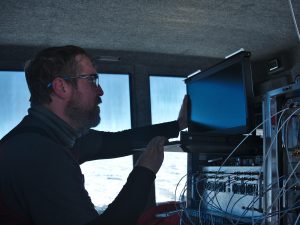
“We’re proving we have the expertise in remote sensing with our radar systems and design to provide unique solutions to answer the questions the scientists have about the ice and our climate,” Taylor said.
Along with what Antarctica can reveal about how the Earth will respond to climate change, there is more to learn about the continent itself. Dr. Samantha Hansen, a UA geologist, oversaw a study of the Transantarctic Mountains that showed a layer of heated earth just below portions of Antarctica are pushing the mountains up from the ground.
“Antarctica is arguably the last frontier in that we know very little about that continent,” she said.
Unlike the vast majority of mountain ranges across Earth, the Transantarctic Mountains did not form through compression, or two continental plates smashing into each other, such as with the Rocky Mountains. The Transantarctic Mountains is the longest and tallest noncompressional mountain range on Earth, even though much of it is buried under snow and ice, which makes understanding how it formed difficult.
Hansen and students in her UA lab, which focuses on earthquake seismology, deployed a seismic network during four trips that collected data for three years. Similar to a medical scan of the body, the 15 stations in the network buried in Antarctica used seismic waves created by earthquakes from around the globe to create an image of the Earth below the mountains.
The seismic images reveal areas where the Earth’s crust is thin around the mountains, creating shallow spots where the next deepest layer, the hotter mantle, is closer to the surface.
“It’s interesting being some place where there are no trees and no animals, no people and no houses,” Hansen said. “Some of the sites we’ve visited … no other human had ever been to before. That’s pretty cool, especially in this day and age, going someplace that you are the first human beings to be there.”
Another UA researcher has looked at the rocks in Antarctica. Dr. Tom Tobin, paleontologist, used Antarctica to grasp more about the mass extinction of dinosaurs, since the fossil and geological record in outcrops are untouched.
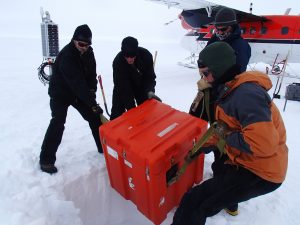
“Its remote location means that its fossil record has not been significantly disturbed by amateur collecting,” Tobin said. “There are some unique challenges with logistics in getting there, and, of course, dealing with the cold and wind while working, but it’s really exciting to work in a place where few people ever get to visit.”
Tobin worked in the sediments exposed on a small archipelago off the northeast coast of the Antarctic Peninsula. There, highly-visible and numerous layers of rock allow for discerning the state of the climate about 66 million years ago. This enables researchers to see how the climate may have contributed to the mass extinction of land-based dinosaurs. Along with the preserved geological record, Antarctica’s location on the South Pole allows it to be a better proxy for the Earth’s climate at the time, since changes are felt more strongly at the poles, Tobin said.
Antarctica and its coastal waters can also reveal much about life now. Dr. Kevin Kocot, a UA zoologist, will travel to the continent twice as part of a study using cutting edge techniques to speed up identification of new species of a group of worm-like mollusks, while also training the next generation of scientists studying invertebrates.
Two expeditions over the next four years aim to find new species of aplacophorans and use advanced imaging and DNA sequencing techniques to identify and classify them. Aplacophorans are diverse and ecologically important in the deep sea and polar regions, but few researchers study them. “Antarctica is changing more quickly than anywhere else in the world,” Kocot said. “Conserving the deep sea and polar regions is really important even if people don’t see it. Having this baseline of what lives there, and having more people who can do that in the future is really important.”
Along with geologists and biologists, two astronomers at UA are members of a team using Antarctica to peer into the universe and learn more about a curious particle. Drs. Dawn Williams and Marcos Santander play a critical role in the IceCube Neutrino Observatory, an array of 5,160 basketball-sized optical sensors deeply encased within a cubic kilometer of clear Antarctic ice.
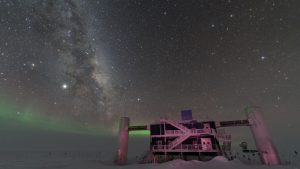
The observatory was set up to detect neutrinos, abundant subatomic particles famous for passing through anything and everything, rarely interacting with matter. The project found evidence of the source of neutrinos, a discovery that opens the door to using these particles to observe the universe.
“IceCube is looking for light from neutrinos interacting in the ice, and the ice at the South Pole has excellent optical transparency,” Williams said. “Light from a high energy neutrino interaction can travel for hundreds of meters in ice, which means we can space the sensors fairly far apart, which reduces drilling costs.”
She is part of an international effort to upgrade the massive cosmic particle detector, coordinating enhancements to its calibration, and she will likely travel again to the frozen continent.
Drs. Totten Minzoni and Tobin are assistant professors of geological studies. Dr. Taylor is an assistant professor of electrical and computer engineering. Dr. Hansen is the George Lindahl III Endowed Associate Professor of Geological Sciences. Dr. Kocot is assistant professor of biological sciences and curator of Invertebrate Zoology for the Alabama Museum of Natural History. Dr. Williams is a professor of physics and astronomy. Dr. Santander is an assistant professor of physics and astronomy.
